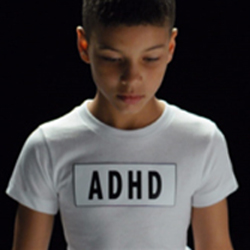By Kelly Patricia O’Meara
Published by CCHR International
The Mental Health Industry Watchdog
April 5, 2017
A recent study published in The Journal of Child Psychology and Psychiatry found that ADHD drugs such as Ritalin and Adderall are not only ineffective in long-term treatment of “ADHD symptoms” but also can suppress growth if taken into adulthood. The study which reaffirms earlier research, concludes that, “…extended use of medication was associated with suppression of adult height but not with reduction of symptom severity.”[1] In short, ADHD drugs not only are ineffective as “treatment,” but there is a long-term detrimental physical/biological ramification associated with them.
Given that nearly five million children between the ages of 0-17 have been prescribed ADHD drugs, including 1,422 0-1 year olds, this study should be raising red flags for parents considering ADHD drug treatment, especially in light of the known adverse effects already well publicized.[2]
For example, ADHD drugs such as Ritalin (methylphenidate) and Adderall (amphetamine and dextroamphetamine), referred to as “kiddie cocaine” are known to cause dangerous adverse effects such as hallucinations, behavior changes, aggression, cardiac problems, abnormal thoughts, sudden outbursts, thoughts of suicide and mood swings.[3]
Additionally, the Drug Enforcement Administration (DEA) classifies both Ritalin and Adderall, common ADHD drug “treatments,” as schedule II drugs along with cocaine, morphine and opium, as they are substances or chemicals defined as having “a high potential for abuse, with use potentially leading to severe psychological or physical dependencies.”[4]
Adding to the above serious side effects of ADHD drugs are psychotic episodes. According to a 2015 study on 141 children, researchers found that children on ADHD drugs were four times more likely to experience psychotic symptoms, including hallucinations and delusions.[5]
It should further be noted that the dangers associated with ADHD drugs are not limited to the United States but are well-known internationally. For example, there are 60 warnings from nine countries (U.S., United Kingdom, Canada, Japan, Australia, New Zealand, France, Denmark and Singapore) citing the following side effects: Heart problems, mania/psychosis, cardiovascular problems, death, hallucinations, depression, violence/hostility/aggression, seizures/convulsions, agitation/irritability, anxiety, suicide risk/attempts and addiction/dependence.

There is no medical or scientific evidence that any brain abnormality exists that is ADHD—no blood test, no X-ray, CAT scan or MRI.
Moreover, despite the long well-known adverse effects associated with ADHD drugs, the fact remains that the ADHD diagnosis itself remains scientifically unproven. After forty years of ADHD diagnosing and drug “treatment,” there still is no medical or scientific evidence that any brain abnormality exists that is ADHD—no blood test, no X-ray, CAT scan or MRI.
In fact, despite ever-increasing numbers of children being prescribed the harmful and even life-threatening ADHD drugs, science remains clueless when it comes to finding even a shred of evidence that reveals any abnormality that is ADHD. Recall that in 1999 the National Institutes of Health Consensus Development Conference concluded, “we do not have an independent, valid test for ADHD,” and “there are no data to indicate that ADHD is due to a brain malfunction.” After nearly two more decades of continued research, nothing about this statement has changed.[6]
The lack of supporting evidence of any brain abnormality that is ADHD has not reduced the number of American children being diagnosed with the alleged mental disorder, but has increased the pharmaceutical companies financial bottom line. IMS Health, a health care information company, reports that prescription drugs for ADHD have nearly tripled from $4 billion in 2007 to $11.2 billion in 2015.[7]
Despite having no scientific evidence to support the diagnosis, ADHD has become one of the most commonly diagnosed childhood psychiatric “disorders” and stimulant drugs like Ritalin and Adderall remain the go-to “treatment.”
With each new study reaffirming the serious long-term effects of these “treatments” parents must weigh whether the documentable side effects of ADHD drugs are worth the risk to their child’s future growth. This latest study certainly reaffirms what long has been known: stimulant drugs are not effective in reducing ADHD symptoms and, worse still, there are biological/physical consequences of long-term use of ADHD drugs.
References:
[1] Swanson JM, et al., “Young adult outcomes in the follow-up of the multimodal treatment study of attention-deficit/hyperactivity disorder: symptom persistence, source discrepancy, and height suppression,” J Child Psychol Psychiatry, 10 Mar 2017, https://www.ncbi.nlm.nih.gov/pubmed/28295312.
[2] IMS, Vector One: National (VONA) and Total Patient Tracker (TPT) Database, Year 2013, Extracted April 2014, https://www.cchrint.org/psychiatric-drugs/children-on-psychiatric-drugs/.
[3] Ritalin, Side Effects Center, http://www.rxlist.com/ritalin-side-effects-drug-center.htm; Adderall, Side Effects Center, http://www.rxlist.com/adderall-side-effects-drug-center.htm.
[4] “Drug Scheduling,” United States Drug Enforcement Administration, https://www.dea.gov/druginfo/ds.shtml; “Drugs of Abuse, A DEA Resource Guide,” United States Drug Enforcement Administration, 2011 Edition, https://www.dea.gov/docs/drugs_of_abuse_2011.pdf.
[5] Lynn E. MacKenzie, MA, et al., “Stimulant Medication and Psychotic Symptoms in Offspring of Parents With Mental Illness,” Pediatrics, Vol 137, No 1, January 2016, http://pediatrics.aappublications.org/content/early/2015/12/29/peds.2015-2486.
[6] “NIH Consensus Report Highlights Controversy Surrounding ADHD Diagnosis and Stimulant Treatment,” Ethical Human Sciences and Services, Vol. 1, No. 1, 1999.
[7] “Medicines Use and Spending in the U.S., A Review of 2015 and Outlook to 2020,” IMS Institute for Healthcare Informatics, Apr 2016, https://morningconsult.com/wp-content/uploads/2016/04/IMS-Institute-US-Drug-Spending-2015.pdf; “Top Therapeutic Classes by U.S. Spending,” IMS Health, 23 Feb 2012.


